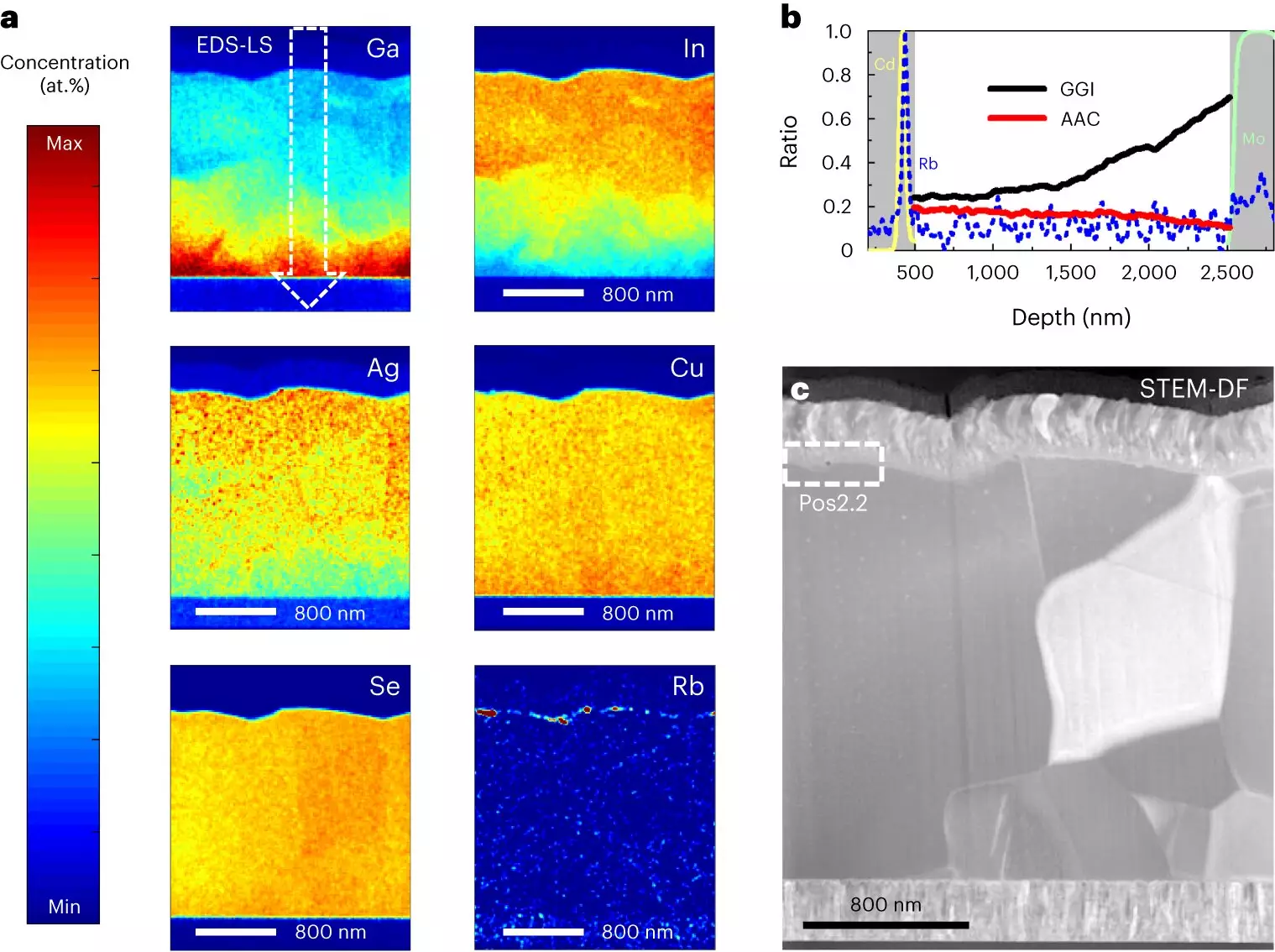In the realm of solar energy, the quest for high efficiency has always been a driving force behind innovation. In a recent development, researchers at Uppsala University and the First Solar European Technology Center AB in Sweden achieved a remarkable efficiency of 23.64% in chalcopyrite-based solar cells. This breakthrough, reported in Nature Energy, represents a significant advancement from the previous record of 23.35% set by Solar Frontier in 2019.
The key to this newfound efficiency lies in the utilization of two primary techniques – high-concentration silver alloying and steep back-contact gallium grading. These techniques, combined with meticulous design and fabrication strategies, helped in enhancing the microstructure of CIGS, reducing defect density and mitigating band gap fluctuations. Additionally, the researchers were able to passivate the surface of the absorber and increase the doping density, resulting in a high external radiative efficiency of 1.6%.
The research team drew inspiration from previous studies that focused on silver alloying with copper indium gallium selenide and the implementation of heavy alkali species into absorber materials. By combining insights from over 40 years of international research on chalcopyrite solar cells, the researchers were able to develop a comprehensive approach for enhancing efficiency.
Read More: Exploring the Potential Heart Benefits of Finasteride
The recent advancements in chalcopyrite-based solar cells hold significant promise for the future of solar energy production. With the goal of surpassing a 25% efficiency threshold, the researchers have outlined a set of possible strategies to further improve performance. One key focus is on mitigating parasitic absorption losses through various means, ultimately aiming to reduce defect density in the absorber bulk.
Looking ahead, the researchers plan to explore new avenues for improving the efficiency of chalcopyrite-based solar cells. By sandwiching an even better chalcopyrite film between transparent electrodes, they hope to address non-radiative recombination losses and enhance overall stability. This paves the way for continued research and innovation in the field of solar energy, with the potential for large-scale deployment of high-efficiency chalcopyrite solar cells.
The recent breakthrough in chalcopyrite-based solar cells marks a significant milestone in the ongoing quest for higher efficiency in solar energy production. By leveraging unique techniques and drawing on past research, the researchers have opened up new possibilities for the future of renewable energy. As efforts continue to push the boundaries of efficiency and performance, the potential for widespread adoption of chalcopyrite solar cells grows ever closer.


Leave a Reply